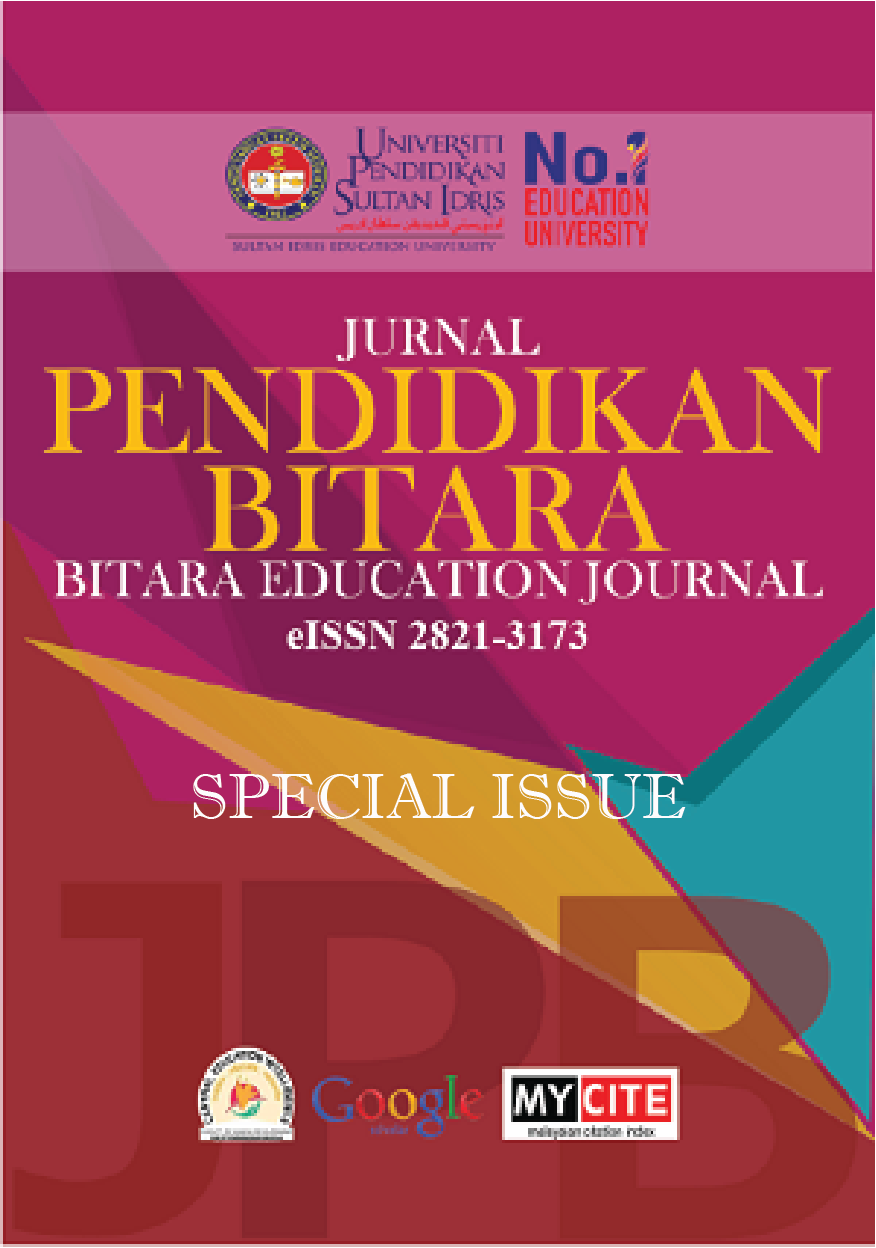Meta-Ethnography for Capacity Building: A Spiral Approach
DOI:
https://doi.org/10.37134/bitara.vol15.sp.10.2022Keywords:
Meta-Ethnography, Graduate Education Students, Early Childhood Education, Seven PhasesAbstract
Graduate education aims to build capacities of current and prospective early childhood educators in conducting academic discourses which include among others reading, writing, and synthesizing studies published in academic journals and other credible sources. Academic writing can induce anxiety among graduate students (Bloom, 1982). It is thus important to teach, instruct and scaffold graduate education students in academic reading and writing and to develop capacities of graduate education students in proposing and conducting independent studies on the phenomena of their own interest. This paper focuses on introducing meta-ethnography and seven phases in an educational inquiry course of an early childhood graduate education programme. Teaching of qualitative synthesis in an inquiry course is designed in a spiral curriculum (Harden & Stamper, 1999) and is organized according to seven phrases (P) (Noblit, 2019): Getting started (P1), deciding what studies are relevant to that interest (P2), reading the studies (P3), determining how the studies are related (P4), translating the studies (P5), synthesizing the translations (P6), and expressing the synthesis (P6). The spiral approach to teaching meta-ethnography in inquiry comprises three stages: Getting ready for analysis (P1, P2, and P3 in iterations), getting ready for synthesis (P4 and P5 in iterations), and synthesizing and presenting the synthesis in academic writing (P6 and P7 in iterations). Within each stage, learning is spiral around four processes: Revisiting the topic or contents in the previous phase, increasing levels of difficulty, relating new learning to previous learning, and increasing competence.
Downloads
References
Bates, M.J. (1989). The design of browsing and berry-picking techniques for the online search interface. https://pages.gseis.ucla.edu/faculty/bates/berrypicking.html downloaded on 19th March 2021.
Bloom, L. (1982). Why graduate students can’t write: Implications of research on writing anxiety for graduate education. Journal of Advanced Composition, 2(1/2), 103-117.
Bruner, J.S. (1960). The process of education. Cambridge MA: Harvard University Press.
Bruner, J. (1983). Child’s talk: Learning to use language. Oxford: Oxford University Press.
Bustanika, L. H., & Suparman, . (2019). Design of pop-up book based on realistic mathematics education to improving spatial ability students of class VIII. Jurnal Pendidikan Bitara UPSI, 12(1), 1-9.
Corbin, A., & Strauss, J. (1990). Grounded theory research: Procedures, cannon, and evaluation criteria. Qualitative Sociology, 13(1), 3-21.
Cooper, C., Booth, A., Varley-Campbell, J., Britten, N., & Garside, R. (2018) Defining the process to literature searching in systematic reviews: a literature review of guidance and supporting studies. BMC Medical Research Methodology, 18(85), 1-14, https://doi.org/10.1186/s12874-018-0545-3.
Dixon-Woods, M., Bonas, S., Booth, A., Jones, D.R., Miller, T., Sutton, A.J., Shaw, R.L., Smith, J.A., & Young, B. (2006). How can systematic reviews incorporate qualitative research? A critical perspective. Qualitative Research, 6(1), 27-44 https://doi.org/10.1177/1468794106058867
Harden, R.M., & Stamper, N. (1999). What is a spiral curriculum? Medical Education, 21(2) 141-143.
Kemmis, S. (2007). Action research as a practice-changing practice. Opening address for the IV Congreso Internacional Sobre Investigación-Acción Participativa, University of Valladolid, Spain, October 18 – 20. Downloaded on 21 Mar 2021. file:///D:/IRB_21/Valladolid_080303_15_gd.pdf
Kemmis, S. (2010). What is to be done? The place of action research. Educational Action Research, 18(4), 417-427.
Noblit, G. W. (2019). Meta-ethnography in education. Oxford Research Encyclopedia (published online on 29 July 2019). https://doi.org/10.1093/acrefore/9780190264093.013.348
Noblit, G.W., & Hare, R.D. (1988). Meta-ethnography: Synthesizing qualitative studies. Newbury Park: Sage Publications.
Sattar, R., Lawton, R., Panagioti, M., & Johnson, J. (2021). Meta-ethnography in healthcare research: A guide to using a meta-ethnographic approach to literature synthesis. BMC Health Service Research, 21(50), 1-13. https://bmchealthservres.biomedcentral.com/articles/10.1186/s12913-020-06049-w
Seers, K. (2012). What is a qualitative synthesis? Evidence Based Nursing, 15(4), 101.
Strauss, J., & Corbin, A. (1999). Qualitative analysis for social scientists: Grounded theory procedures and techniques (2nd Ed.). Newbury, Park: Sage.
Vollstedt, M. & Rezat, S. (2019). An introduction to grounded theory with a special focus on axial coding and coding paradigm. In G. Kaiser and N. Pregmeg (Eds.), Compodium for early career researchers in mathematics education, ICME 13 Monography (pp. 81-100). Springer. file:///C:/Users/agtan/Downloads/Vollstedt-Rezat2019_Chapter_AnIntroductionToGr.pdf
Vygotsky, L. S. (2004). Imagination and creativity in childhood. Journal of Russian and East European Psychology, 42(1), 7-97.
Westphal, A., Kriston, L., Hoelzel, L.P., Haerter, M., & von Wolff, A. (2014). Randomized controlled trials: A case study from a systematic review on therapeutic interventions of chronic depression. Journal of Public Health Research, 3(2), 58-65. doi: 10.4081/jphr.2014.177
Wollin, C. (2014). Guidelines for snowballing in systematic literature studies and a replication in software engineering. EASE '14: Proceedings of the 18th International Conference on Evaluation and Assessment in Software Engineering (May, Article No.: 38), 1–10, https://doi.org/10.1145/2601248.2601268





